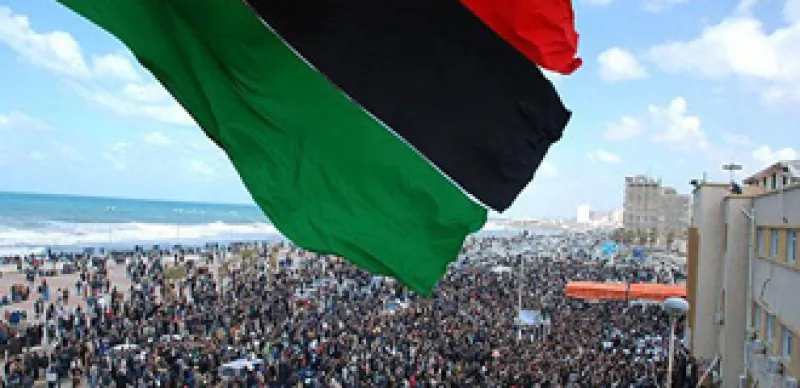Hopes that the upheaval in the Middle East and North Africa will reprise the “Velvet Revolution” that freed the Czech Republic in 1989 are starting to fade. Of course, the revolutions that started in Tunisia and Egypt and now have engulfed Libya will play out differently from one country to the next.
But should the conflict spread in earnest to Saudi Arabia or Iran, it’s a good bet that the government response will model that of Libya’s Col. Muammar (“Fight to the Last Drop of Blood”) el-Qaddafi more closely than that of Egypt’s deposed Hosni Mubarak, who appears almost statesmanlike in contrast. And protesters well may take up their leaders on the offer of a fight to the death.
Here’s what the financial markets are telling us today: There is real risk in the Middle East crisis, which clearly has the potential to impact oil and other commodities, not to mention inflation and economic growth. The price of oil rose 6.7 percent Feb 22, in New York, after touching a two-year high earlier in the day. Equity investors, who have been relatively sanguine about the Middle East crisis, locked in on Tuesday, and sent the S&P 500 down as much as 1.9 percent, its biggest decline in six months. Treasury yields fell and the Swiss franc, a key-safe haven currency, rose 1 percent.
The CBOE volatility index, known as the VIX, soared 24 percent to 20.37 on Tuesday. It is still well below the panic level. A reading of 30 is considered the flash point of investor concern. And it isn’t even close to the all-time high of 90, reached during the financial crisis in 2008. (A panic level if there ever was one.)
In the long run, the changes sweeping the Middle East and North Africa could well open up new markets and boost growth. But the outcomes won’t be clear for some time, and risk and uncertainty will cloud the outlook as far as the eye can see.
The deepening crisis underscores just how little Westerners know about a seemingly familiar region of the world. The Middle East, a fixture of cable TV news and flood the zone news coverage, has been closely examined for decades through the prism of the wars in Iraq and Afghanistan, terrorism, Islamism and the Israeli-Palestinian conflict. But the current crisis doesn’t follow any of those scripts, and there was very little appreciation of just how near and serious it was until it exploded. Even now, few analysts will predict how it will unfold.
What we do know is that the pace of events has picked up, in an increasingly volatile and deadly manner. The tremors have been felt as far away as Zimbabwe and China, where authorities are clamping down on protests inspired by the Middle East and North Africa. Should protests extend beyond the current stage, 2011 might look a lot more like the Bolshevik Revolution of 1914 than the Czechoslovakian revolution in 1989.






